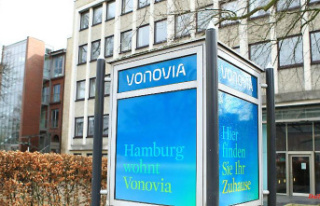After a two-year Corona break, the famous Pamplona bull run inspires millions of fans. For the city, the "Sanfermines" festival means record sales, for the nearly 2,000 runners the Hatz is an incomparable adrenaline rush. But the criticism of the bloody activities is getting louder.
The city of Pamplona in northern Spain has grown sixfold practically overnight. Around a million people from Germany and abroad are traveling to the 200,000-inhabitant community these days to attend the "Sanfermines" festival with lots of red wine and sangria. This was reported by the newspaper "El País", citing the authorities. Many of them came to the first wild and at the same time controversial bull run on Thursday. This takes place every day in the early morning until next Thursday. Animal rights activists are once again appalled.
The festival in honor of the city saint San Fermín is booming. It has been celebrated since 1591. The US author Ernest Hemingway wrote about this in his novel "Fiesta" (1926). In 2020 and 2021 the celebrations were canceled due to the corona pandemic. The anticipation was particularly great this time. The state television RTVE and other broadcasters broadcast the bull hunt live in the morning. There are also special programs, some of which last several hours. Millions sat spellbound in front of the screens.
According to RTVE, around 25,000 people watched the bull hunt on site from balconies, walls and side streets. Tourists paid up to 180 euros for short-term rental of a small balcony, tour operator Mikel Ollo said. The demand is particularly high among Americans. For the city, the festival, which costs about 2.7 million euros to organize, means income of an estimated 80 to 100 million euros. It goes without saying that hotel, pub and restaurant operators rub their hands at the noisy cash registers and Mayor Enrique Maya rejoices and speaks of a "historic" edition and the "biggest festival in the world". The "Sanfermines" have drawn hundreds of thousands to the city for many years, but despite inflation and the energy crisis, enthusiasm and attendance have rarely been as great as this year, an RTVE commentator noted.
But not everyone shares the excitement. Animal rights activists protested several times this year against the bull hunt and bullfights, which are now increasingly controversial in Spain. On Wednesday, dozens of activists in Pamplona dressed up as dinosaurs and carried placards that read "Bullfighting is prehistoric" in different languages. Meanwhile, in her column in the well-known newspaper "El País," the respected film director and media expert Eva Güimil complained: "This is animal torture on live TV."
But all the outrage does not detract from the spectacle and the enthusiasm of the visitors. David Úbeda is one of them. According to his own statement, the 44-year-old from Madrid has been taking part in the running of the bulls for 17 years. In 2019 he was seriously injured and could not walk for months. But on Thursday he was back and couldn't wait for the first run. It is "like a drug". In the RTVE interview, he tried to calm the family at home, visibly moved and with tears in his eyes. "I'll be a bit more careful this time. Everything will be fine."
A few minutes later, almost 2,000 runners drove six fighting bulls, some of them weighing more than 600 kilograms, and also several tame bullocks through the narrow streets of the old town for the bullfights in the evening to the arena, to loud cheers from the spectators. The runners were typically dressed all in white and wore red scarves. But you could also see jerseys from European football clubs. They are mostly young men who often try to touch the long, pointed horns or to slap the bulls. You see few older people and even fewer women.
There are always falls, people are overrun by cops and bystanders. Death always runs with the courage tests over the route, which according to various sources is 825 to 875 meters long. There have been 16 fatalities since 1924, the last in 2009. Every year dozens of runners are injured, some seriously. On Thursday, five participants had to be taken to the hospital with injuries such as bruised skulls and broken bones. Úbeda was not among them this time.
But the animals are worse off. The bulls who are wildly herded into the arena in the morning die in bullfights in the evening. The head of the organization AnimaNaturalis, Aida Gascón, posted gory pictures of killed bulls on Twitter and wrote: "This is how the 48 bulls to be executed at the (this year) Pamplona fiestas will end. The pandemic has not made us better people done, we still have cruel ways."












